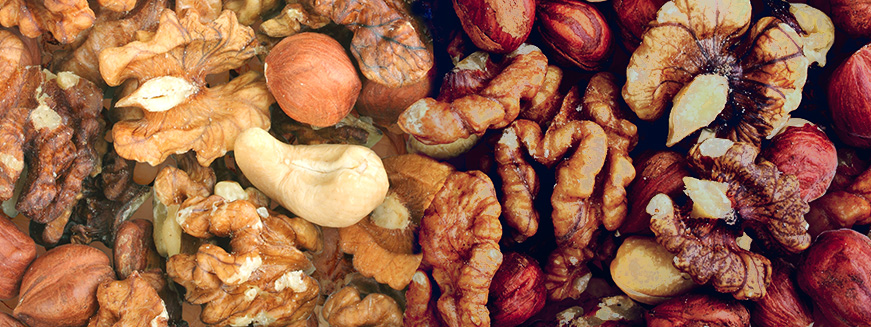The Fresh Blog
Lifestyle, Health, Nutrition & Inspiration from Luvo
The Great Nut Debate: Raw versus Roasted
Ah, nuts: the go-to snack of the health food realm- a dieter’s saving grace and grazers’ often demise. The high protein and good fats in nuts have earned them the honor of “nutritional heroes.” They’re portable, generally adored and marketed as a fast, energy packed bridge between meals. Pretty much anywhere you go these days you’ll find them, planes, gas stations and of course- the local watering hole. Nutritional media and dieticians alike preach the importance of a handful of nuts a day for a well balanced diet.
But hold on, what they don’t tell you is that not all nuts are created equal. To be clear let me give you the lowdown on all things nutty. I’ll begin with some basic misconceptions about these shelled, nutritional bad boys. First and foremost: know your roast.
A big misunderstanding many people have about including nuts in their diet is that most of the nuts sold are fried, not roasted! The next time you find yourself in the nut aisle, check out the ingredients listed in common brands. You’ll find salt, sugar, various types of added oils, and likely a few ingredients you can’t pronounce.
You may be asking yourself, why use oil to prepare food that already contains about 60 to 80% of its calories from natural fats? Ultimately, frying is more cost effective with a smaller margin for error. By frying, manufacturers can use stale or low-quality nuts, enhancing their taste with salt and sugar. Unfortunately, this process oxidizes the heart-healthy polyunsaturated fats, creating unstable compounds linked to cancer and inflammation.
Doesn’t sound great, right? The world looking bleak? Are the walls crumbling around you? Don’t give up hope- there are some surprising benefits to dry-roasting certain nuts. Chock full of a compound called phytic acid, which is used by plants to store phosphorus, nuts can create a nutrient barrier in the body. When ingested in large quantities, phytic acid behaves like an anti-nutrient, binding to minerals like calcium and magnesium and blocking absorption. By consuming dry-roasted nuts, it lessens the effects of phytic acid which makes some nuts (and legumes like peanuts) easier for the body to digest.
Interestingly, dry-roasting doesn’t significantly effect the basic nutritional properties of nuts. The protein, fat and fiber content stays relatively the same, with raw nuts being slightly better nutritionally. Unlike polyunsaturated fats found in almonds and walnuts, monounsaturated fats, found heavily in cashews and macadamia nuts, don’t oxidize as readily and are better equipped for a proper roasting.
The consensus? It’s probably best to consume nuts raw according to experts (and illustrated here by Prevention Magazine). But it’s also healthier to stay away from beer, pizza and that crazy friend we all have. Life’s about moderation, and a few bad “nuts” won’t kill you (unless you have a nut allergy, if so… why are you still reading this?).
Personally, I recommend buying raw nuts in bulk, and storing them in the fridge or freezer where they can keep for a year plus! Try and roast a batch yourself at home. Not only will roasting nuts make you look tres Martha Stewart chic, you’ll also be in control of the sugar and sodium content. So the next time you’re looking for a snack or making a salad for guests, blow their socks off with your killer nuts (hopefully not a literal kill… again check for allergies).
Check out these recipes and share your favorite nut preparations in the comments section or on Twitter @Luvoinc!


